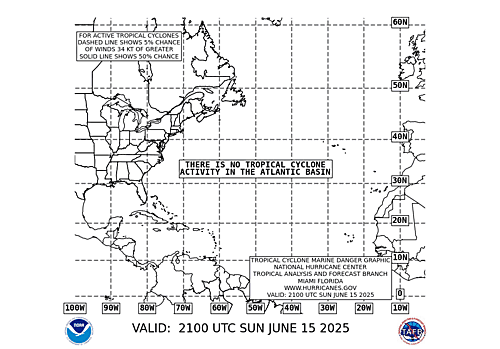So we have two systems that could possibly impact the eastern coast of the United States. 93L was weakened substantially by Hispaniola over the previous 24-36 hours, however it has since moved to the north and convection has increased around the storm center of (broad) circulation. It still looks possible that 93L could become a named tropical system if it can keep the convection near the center. My original thought that the system would continue to move westerward when it was still near Puerto Rico was correct, and it slowly drifted towards and then over Hispaniola. However, the steering currents have changed now (2-3 days later) and now there is no question that it will move towards almost due north. New England looks like it is in for a possible hit.
As for 94L, the system is thriving off of a very strong pressure gradient caused by a huge high pressure system over the northeast United States. The system itself is only 1003 mb, but has winds nearby of 55 mph or higher. Basically, we have a tropical depression, or extratropical system, developing in an area of very high pressure, thus resulting in higher synoptic winds. It is a very tough situation. Do you call this a tropical storm? Do you hold off and keep it a depression since the winds are mainly supported by the pressure gradient to the north and not the system itself? Very, very tough call. Some (Bastardi) think it should already be named. Others (NHC/TPC) think it isn't even a tropical system at all, but rather an extratropical system that just happens to be producing up to hurricane force wind gusts.
I think the best explanation as to what type of system it is can be described by the tropical models. They, as Greg Nordstrom pointed out, are forecasting the system to substantially weaken when it moves over land near the SC/NC border. Extratropical systems do not weaken when they move over land, but tropical systems do. It is possible the models are wrong, and the system is not tropical in origin...but it is an indication that it is likely to at least become tropical. Right now I find it very difficult to think that the NHC will call it a named storm considering its satellite appearance, but if convection increases over night, we could see Kyle in the morning.
Oh, and if Kyle does form near the Carolina coast...and then 93L forms in the Atlantic, it will be named Laura.
Dual-Pol Applications
13 years ago





 European 0Z model initialization:
European 0Z model initialization:











